How can scientific institutions like AGU be better partners to communities?
AGU’s 2021 Fall Meeting took place in New Orleans, Louisiana. While we were there, Thriving Earth Exchange visited several communities where Thriving Earth community science projects have taken place or are still in progress. We met community leads, learned more about their projects and how they’ve evolved over time, and asked them what it would mean to deepen and strengthen our collaboration.
We received some honest, specific and powerful feedback – and had the honor of capturing unique images, too, that highlight the amazing people of New Orleans. Below, we share the insights people took time to share with us – insights we’re taking to heart as we work to make our program more valuable, accessible and effective in 2022.
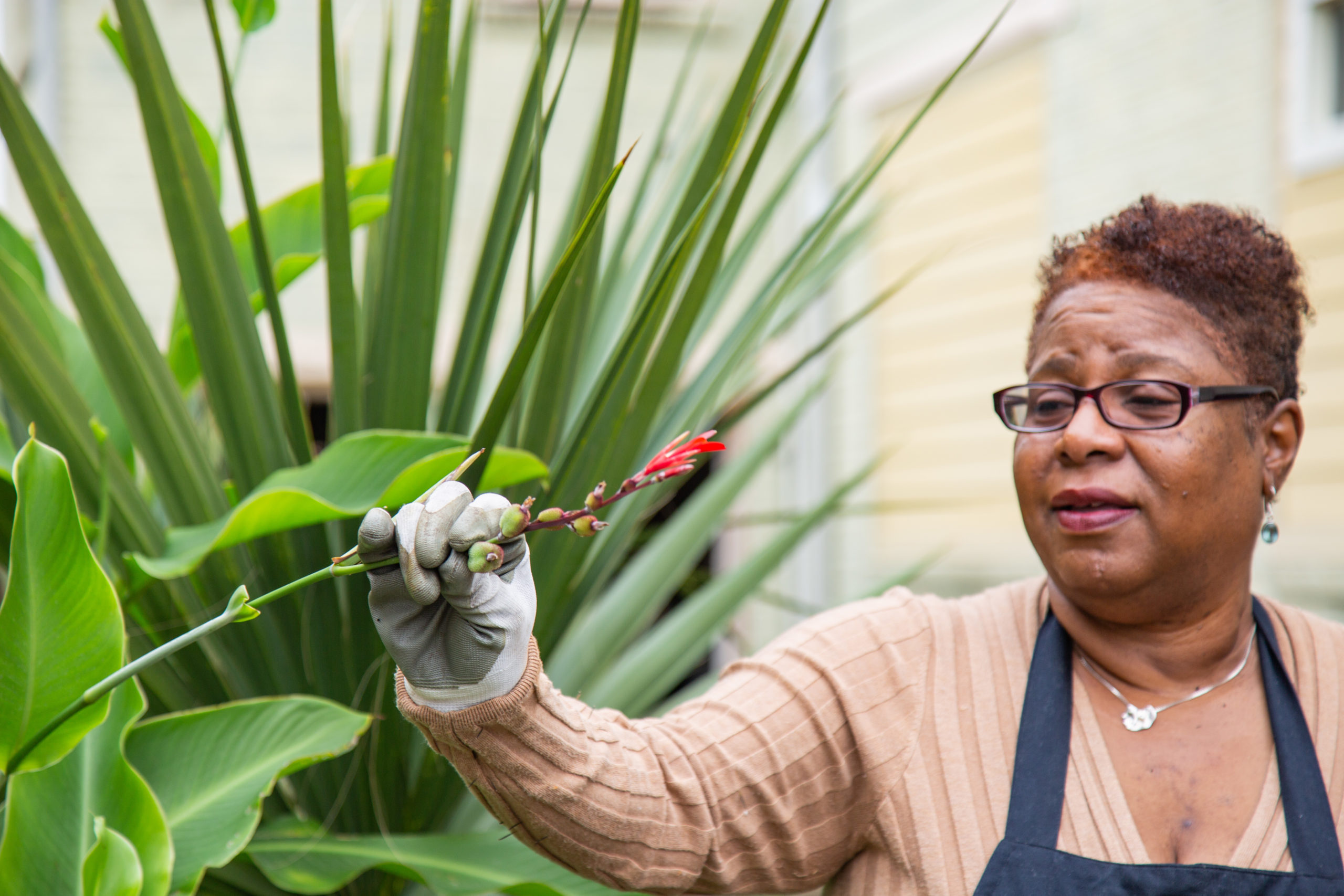
Community lead and executive director and co-founder of Healthy Community Services Angela Chalk leads a tour of her 7th Ward neighborhood, where her organization worked with residents to build bioswales, rain gardens and barrels, community tree plantings and other green infrastructure interventions that are reducing flooding and cooling the community. Photo Credit: AGU/Beth Bagley
What We Learned
During our stay, we listened to and gathered feedback from communities in a few different ways. We asked questions during our photo tours of project areas; facilitated a community conversation at the Treme Market Branch on Claiborne Avenue on highway I-10 (see below); and attended Fall Meeting sessions featuring community leaders in New Orleans and across the state of Louisiana. Here’s what we heard we – and other institutions of power – need to do.
“Create funding pathways that are equitable and accessible.” This is an important consideration for all institutions – academic, government, research, business and more. What is the most effective way to leverage our power and platform? It should be our priority to center communities that have been historically marginalized – including communities of color, Indigenous peoples and rural and low-income communities – in grants, awards and other funding opportunities. Community leads encouraged us to create more of these opportunities in 2022 and beyond.
We should also interrogate the grant process itself. Calls for proposals should be easy to access with clear specifications, simple ways to submit applications, and support to help ensure applicants have the best possible opportunity. And, we need to rethink traditional funding models with onerous requirements that force grant recipients to jump through hoops to show their work. There is no equity in funding relationships without trust.
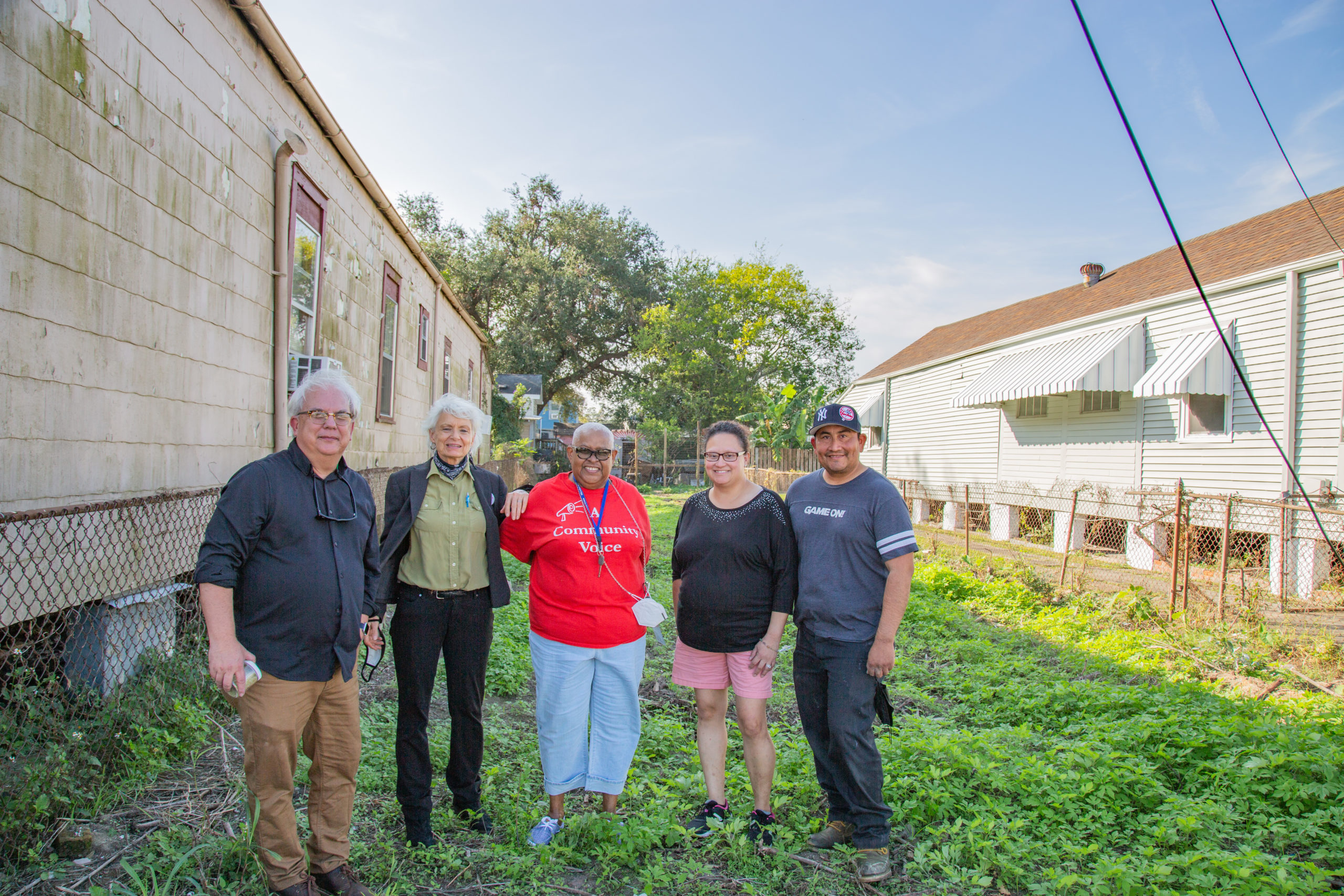
The 8th/9th Ward bioswale project team stands at the site of a future bioswale and affordable housing in the 8th Ward of New Orleans. The planned design integrates native plant gardens and private outdoor space to promote residents’ physical and mental health. Pictured: LSU scientist John Pardue; community leads Beth Butler and Debra Campbell of A Community Voice; and Noriana and Oscar Figueroa. Photo credit: AGU/Beth Bagley
“Create a policy playbook.” In a community conversation, Claiborne Avenue project lead Tamah Yisrael noted that while it’s important to have data to back decision-making, communities would benefit from a community-based roadmap for translating science into policy change. How have communities successfully used science to create change? What made them successful? And how can other communities learn and bring those successful approaches to their own work? This is a potential place where a university, nonprofit organization or research institution can be very helpful in researching and gathering case studies and analyzing strategy. And, they can often tap legal publications, scientific journals and other resources communities may not be able to access.
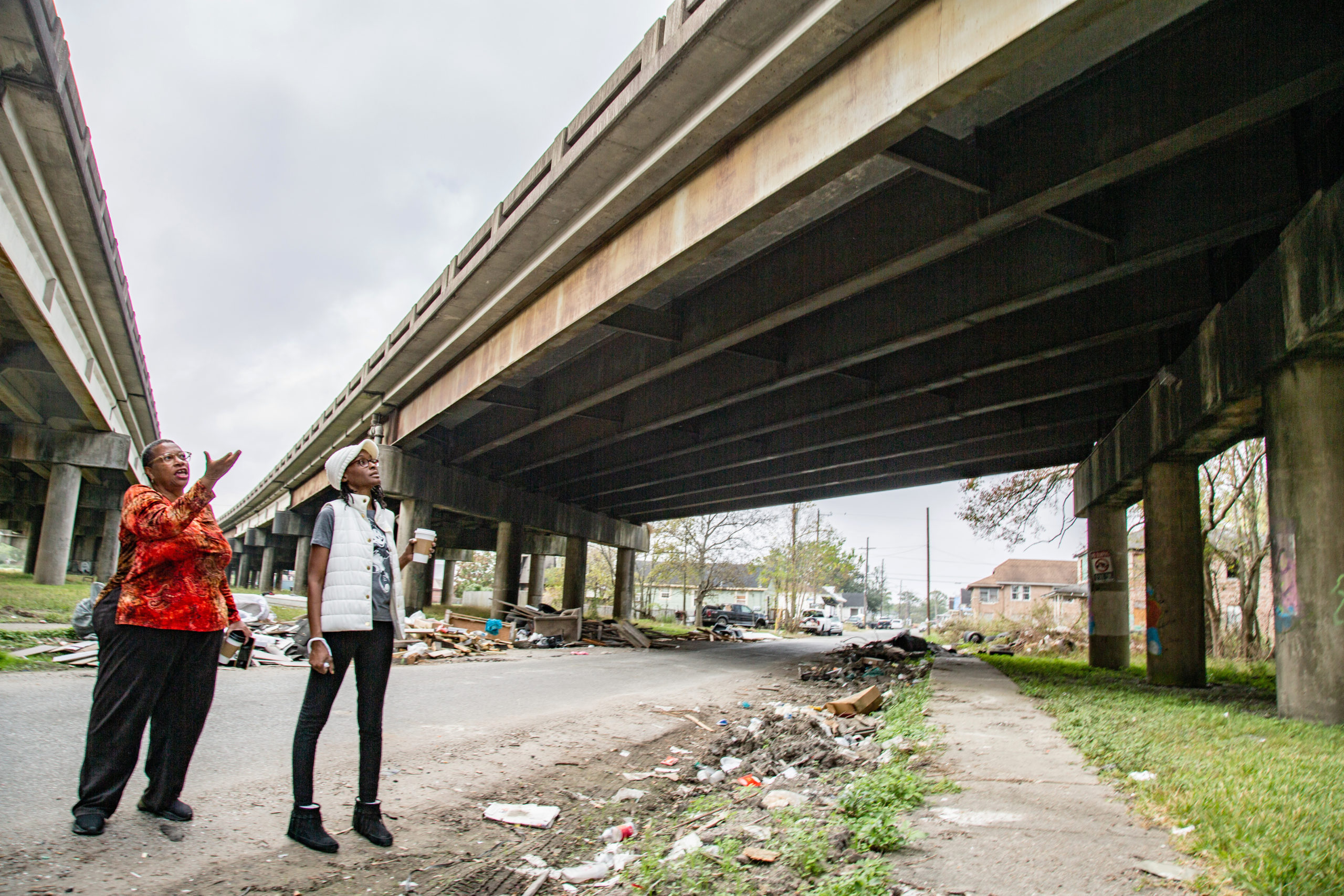
From left: Community leads Amy Stelly and Tamah Yisrael of the Claiborne Avenue Alliance stand at the highway I-10 overpass in Tamah’s neighborhood in the 7th Ward. Claiborne Avenue runs through what were once thriving Black commerce districts and residential neighborhoods in New Orleans. When the highway was erected directly over the avenue – one of the most visible examples of the racist midcentury highway developments in cities – it fragmented the community geographically, socially and economically. The Alliance worked with Thriving Earth to better understand the highway’s health impacts and other effects on the community, and gather data to drive policy change for solutions.
“Manage expectations.” In the Claiborne Avenue community conversation, scientist and LSU professor Dr. Adrienne Katner noted that before an institution partners with a community, there needs to be a clear understanding between them of what the institution can do to support the community’s priorities, especially when it comes to policy change. Being up front saves everyone time and helps the community decide whether that institution can help achieve their goals, or if they need a different kind of partner.
Having having thorough discussions with communities about what they are trying to achieve also creates an opportunity for institutions to leverage their connections to bring in more resources or support than they can provide alone.
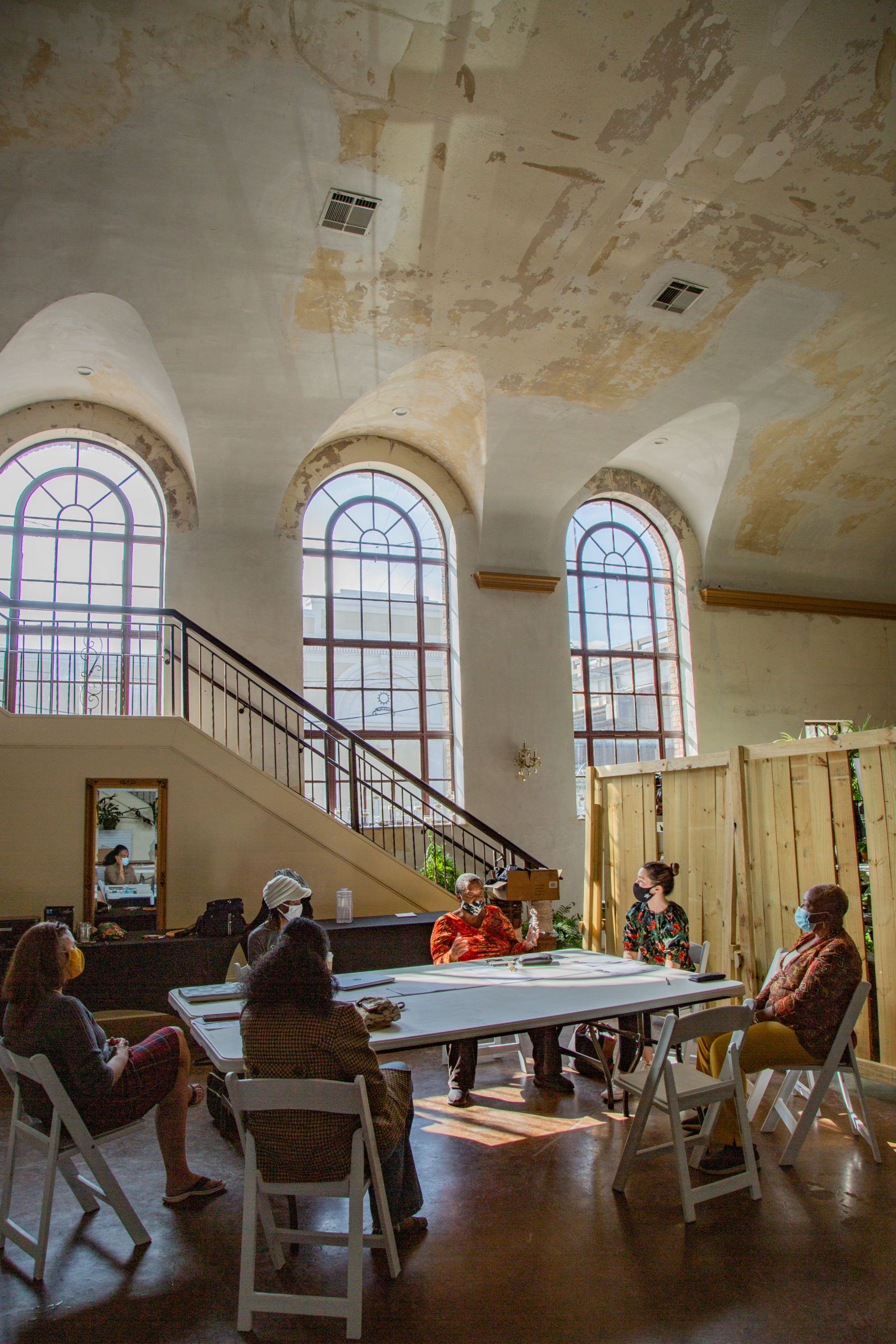
Amy Stelly, Tamah Yisrael and other community leaders and residents meet for a community conversation, facilitated by Thriving Earth communications program manager Haley McKey. The conversation took place in the Treme Market Branch on Claiborne Avenue, a beautiful and historic former bank, now an event space and plant shop owned by Margaret Thomas (far right).
“We’ve been studied to death.” More research can have diminishing returns. if institutions are to be effective partners, they need to recognize when communities are ready to move on from research and seek support to find solutions. Amy Stelly, Claiborne Avenue community lead said, in reference to public health impacts on the community from highway I-10, “we’ve been studied to death,” – and that it was time to shift resources toward solutions. 7th Ward Thriving Earth Exchange community lead Angela Chalk echoed this in the Fall Meeting Innovation Session “The Anthropocene Comes Home – Innovation and Adaptation in Louisiana,” she co-convened with Low-lander center leader and facilitator Kristina Peterson. As she put it, “…We’re beyond being studied. Because government is so bureaucratic and slow to respond, we cannot afford to wait for government to protect us or to have these issues brought forward.”
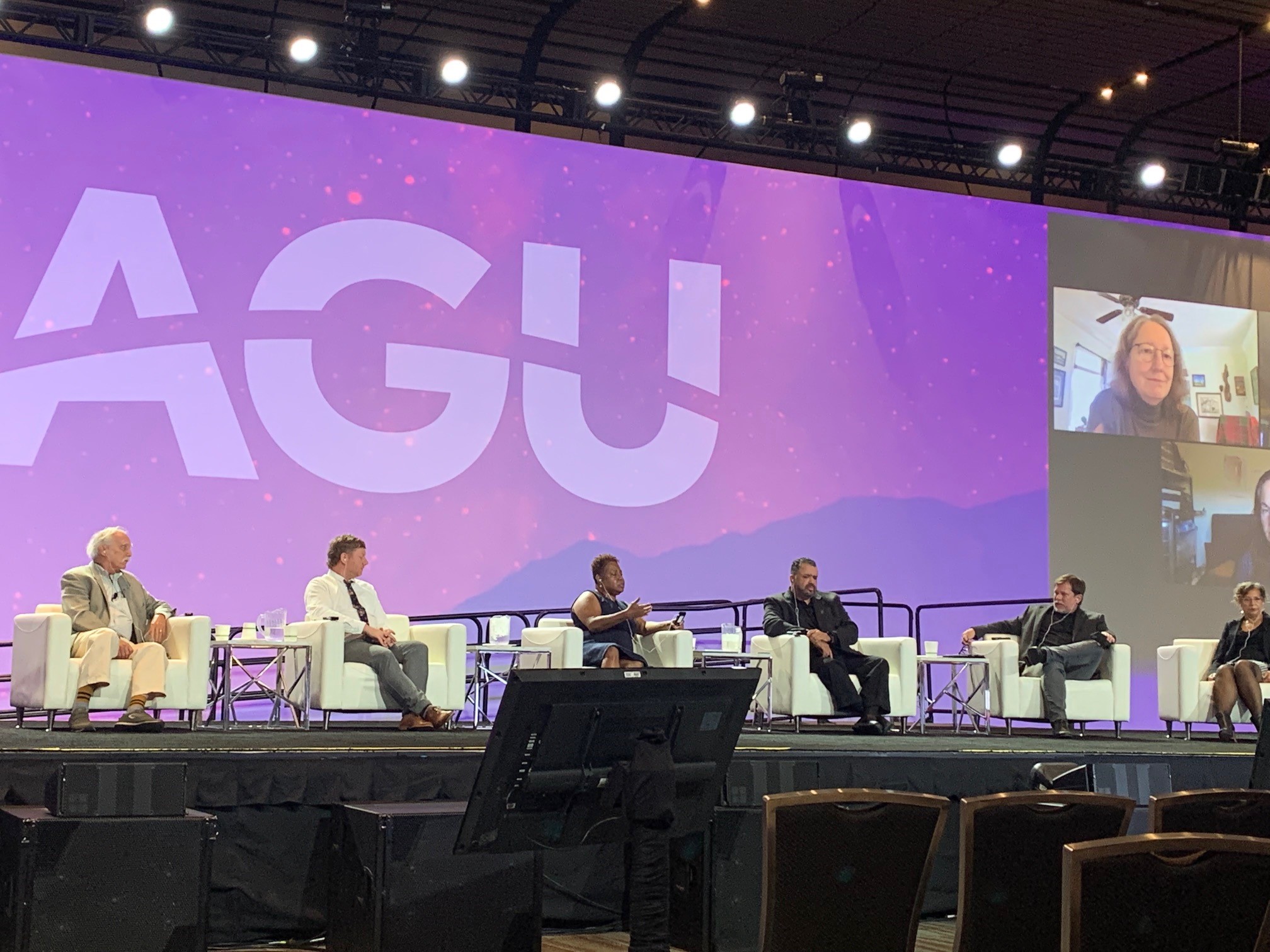
Angela Chalk (3rd from left) speaks at the Anthropocene Comes Home Innovation session at AGU’s Fall Meeting in 2021. Photo Credit: AGU/Haley McKey
“Create fellowships for students.” Several community leaders emphasized the need for training and encouraging participation in community science, from middle and high school all the way to early career scientists. The movement toward community-centered, collaborative science is growing. Training is a way to nurture that growth and increase the number of knowledgeable scientists, planners, engineers and other technical experts available to communities seeking their help. This can lead to certification programs and degrees and build new career paths, too. Several Thriving Earth projects involve students, including the ongoing 8th/9th Ward bioswale project, for which LSU students created award-winning bioswale and affordable housing designs under the guidance of Dr. John Pardue, Civil Engineering professor and community scientist for the project.
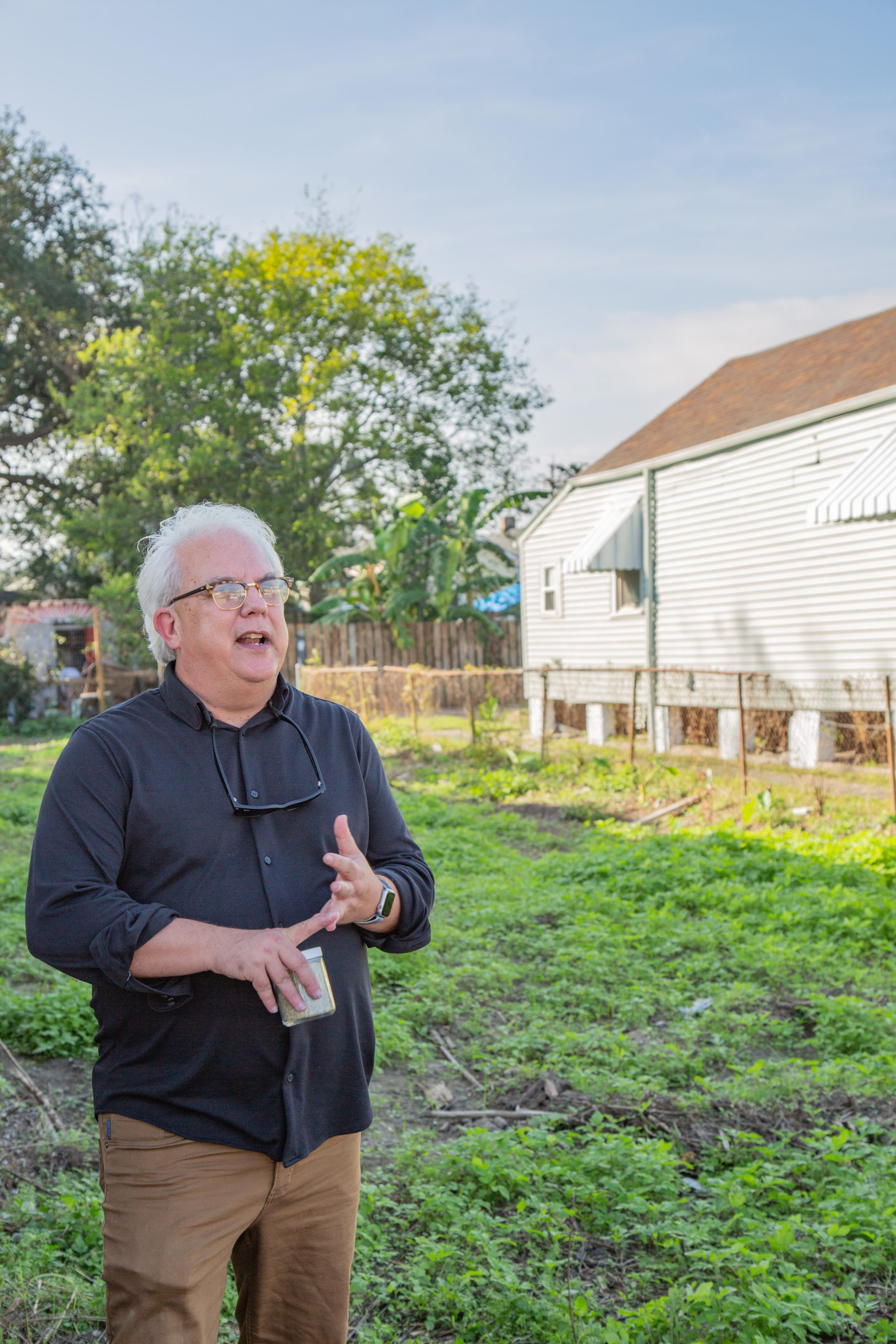
Dr. John Pardue speaks at the planned 8th Ward community bioswale site. He holds a sample of the sand the project team will use to replace hard-packed, old soil and encourage drainage. Photo credit: Beth Bagley
“Honor community knowledge as a whole wisdom package to solve problems.”
During the Anthropocene Comes Home session at Fall Meeting, Lowlander Center cofounder Kristina Peterson made a striking observation: “Sometimes when academics are confronted with a complex issue they feel hopeless. We’ve been trained in silos. Folks in the community have their future at stake. We must honor their knowledge as part of a whole wisdom package we can move to solve problems.” This is one of the most important tenets of community science – everyone involved must put their preconceived notions about a situation away and focus on the community’s priorities and knowledge.
This is exemplified in the Gentilly Thriving Earth Exchange project, which combined citizen and community science: residents reported their flood experiences through the ISeeChange environmental reporting app. Flooding is a major issue there: “If you were to touch a 3D map of New Orleans with your eyes closed, you’d feel a bowl or depression – that’s Gentilly,” community lead Julia Kumari Drapkin told us. Even routine storms could be catastrophic: some residents were forced to stay inside until floodwaters went down; others lost cars, outdoor equipment and other possessions.
ISeeChangers in Gentilly tracked 29 flood events, demonstrating that flood models were underestimating impacts in low income neighborhoods. The community-sourced data was a catalyst that resulted in remodeling and reallocation of $4.8M in flood mitigation to the St. Bernard Campus in Gentilly. The underground unit was expanded by 2.5x, storing up to 5 million gallons of stormwater in underground detention basins- the largest of its kind in the South.
The findings are now being used to inform future green infrastructure and flood control projects in the area.
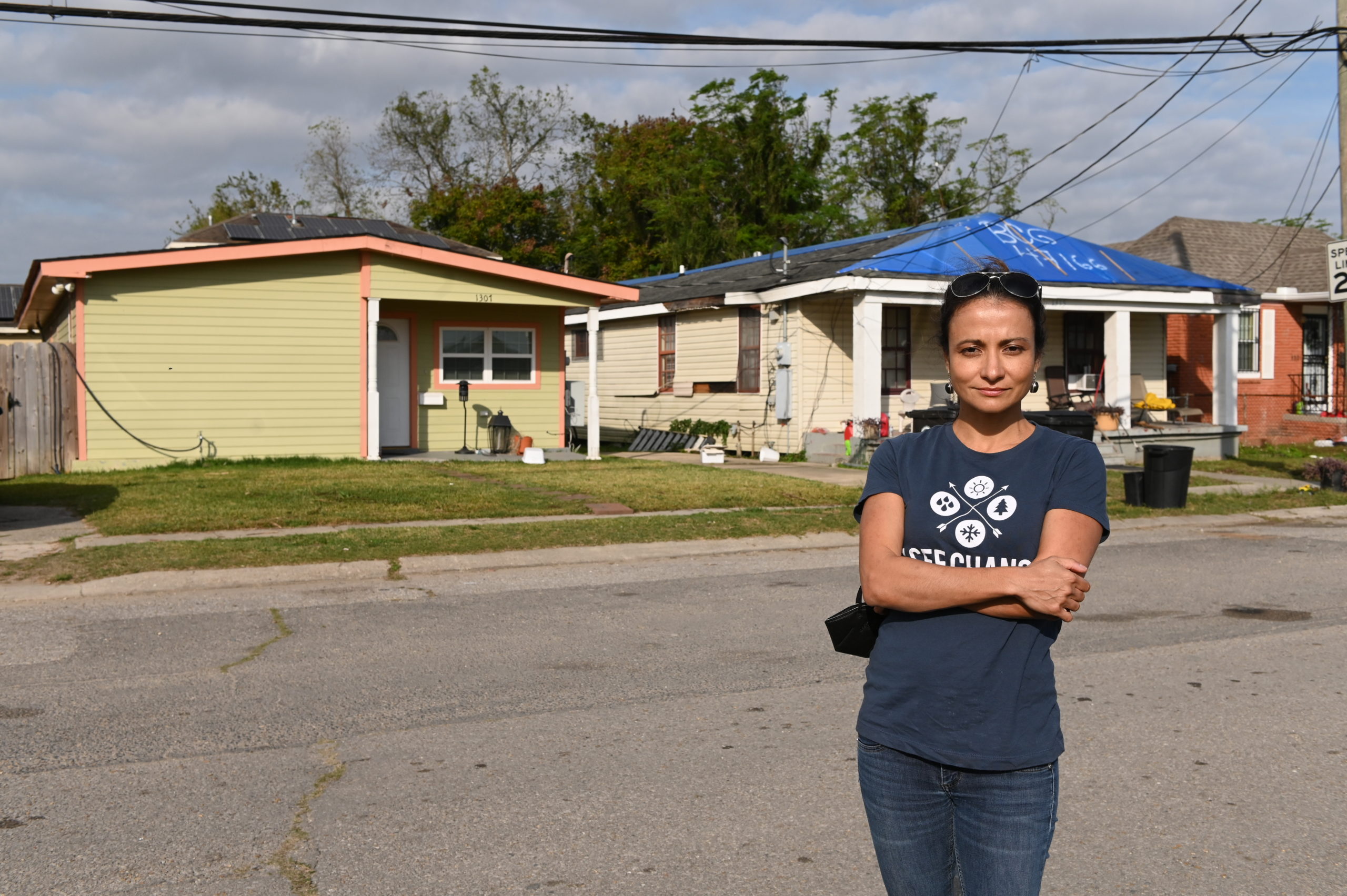
Community lead Julia Kumari Drapkin stands in front of a home with an iconic blue roof (a tarp to protect hurricane-damaged homes from weather) in Gentilly, New Orleans. Drapkin is the Founder and CEO of ISeeChange, an international platform that allows people all over the world to share environmental observations. Photo credit: Jeff Strout
“Do your part to increase confidence in science.” Scientific institutions must consider their role in changing public perception of science, which has been undermined by misinformation (accidental) and disinformation (intentional) for decades. We see the consequences of this erosion of trust in the ongoing COVID-19 pandemic, and in escalating climate impacts with little policy action to address them. And institutions have not made it a priority to build bridges between the scientific community and anyone outside of it – historically, the field has been exclusive, arrogant and all too willing to dismiss objections or questions rather than respectfully address them.
It is not enough for institutions to fund and produce science; we need to also be thoughtful about how it is perceived, prepare scientists to share their work effectively and combat false narratives by building trusting relationships with non-scientists.
We are thankful to everyone we met during our visit to New Orleans, and for the opportunity to see old friends and meet new ones. And we are grateful to take what we’ve learned and strengthen the field of community science.
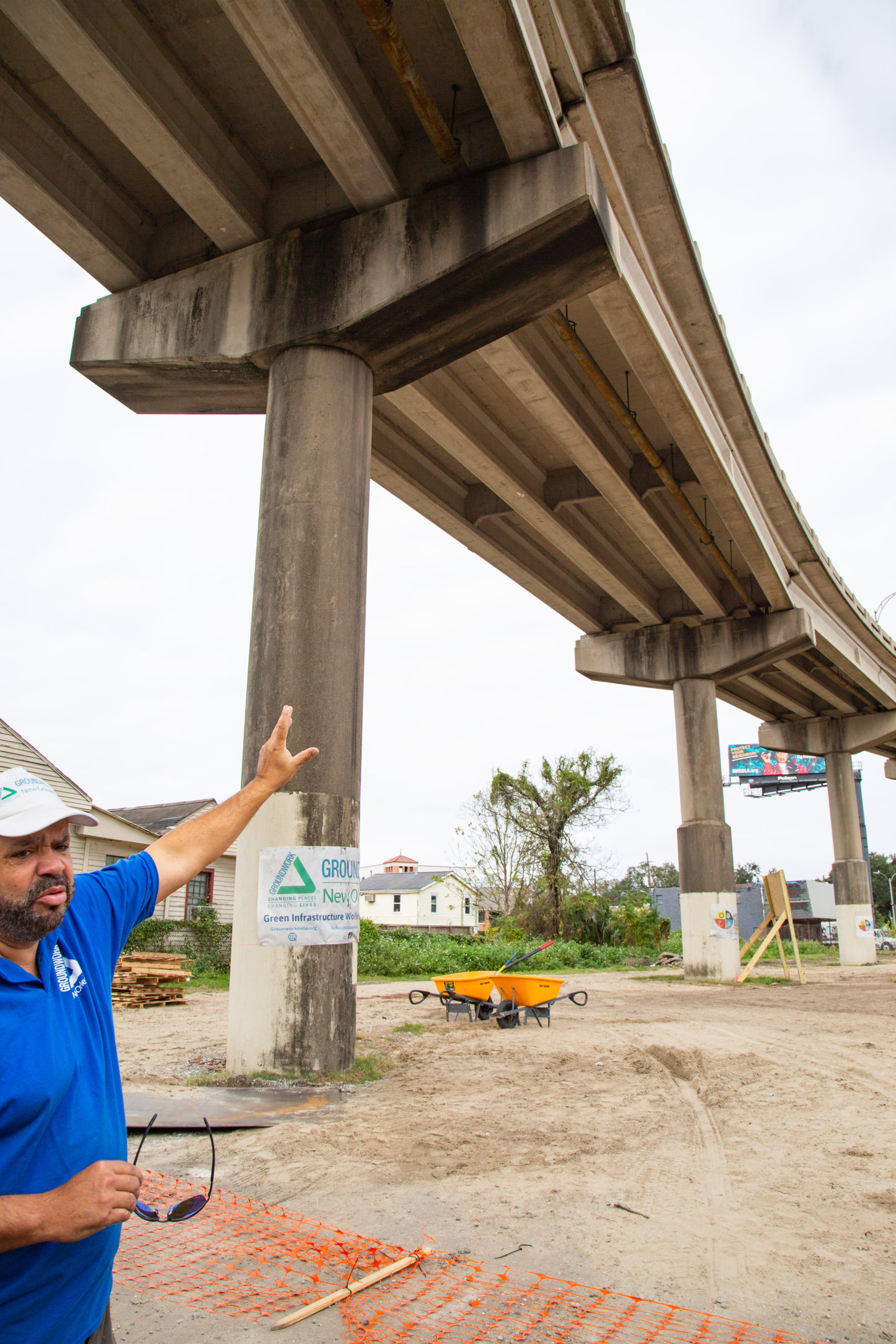
Todd Reynolds, Executive Director of Groundwork NOLA, points out a new planting project intended to reduce flooding under the highway in the 7th Ward. Todd joined the Anthropocene Comes Home session at Fall Meeting. “Environmental racism is still happening – we can see that in the placement of the trees in the city. [With these greening projects] we can address it,” he said. Photo credit: Beth Bagley
